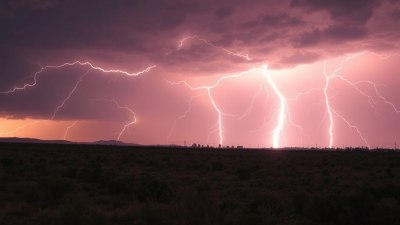Why Your Phone’s Weather Widget Is Gaslighting You
Explore why your phone's weather widget might not be telling the whole truth about the weather.

Image by the-yuri-arcurs-collection on Freepik
The weather widget on your smartphone serves as a convenient tool, providing real-time updates and forecasts directly on your home screen. However, a closer examination reveals that these seemingly accurate predictions can sometimes lead to confusion, disappointment, and even a sense of betrayal. Why, you ask, can such a simple app create feelings of distrust? The answer lies in understanding the technology behind weather widgets as well as the nuances of meteorological data and personal perceptions.
The Basics of Weather Widgets
Most weather apps and widgets rely on a variety of data sources to generate forecasts. These include satellite data, weather stations, and even numerical weather prediction models that utilize complex algorithms. However, the quality of this data can vary significantly based on location, which can ultimately impact the reliability of the forecasts.
Furthermore, weather apps often customize their local forecasts by using GPS data which helps pinpoint the user’s exact location. While this precision should improve accuracy, it can also lead to discrepancies between what the app reports and the actual conditions outside your window. For instance, if the weather station reporting data is several miles away, the conditions may not accurately reflect your immediate area.
The Role of User Experience
Not only does the data influence weather widget predictions, but personal experience colors our perceptions. If your weather app forecasts a sunny day but you wake up to an overcast sky, the app may be perceived as unreliable, even if the forecast was based on accurate data. This phenomenon can feel like a form of 'gaslighting,' where the user starts to question their own sense of reality in light of conflicting information.
Data Interpretation and Presentation
Another layer of complexity comes into play with the presentation of weather data. Many weather widgets tend to simplify information into digestible bites for the user. For example, they might show a simple sunny icon with a temperature reading and low humidity, which can misrepresent more complicated weather conditions. A day that starts sunny may actually lead to rain showers later, yet the widget only signals the morning's weather, leaving users unprepared.
Inaccuracies and Misleading Features
Many weather widgets also offer radar and satellite imagery, yet sometimes that information can be misleading. A user may see a graphic representation of a storm moving towards their location without understanding that the storm could dissipate or shift course. Therefore, users often end up relying more on visually impactful representations rather than real forecasts, leading to misunderstandings and misplaced trust.
Expectations vs. Reality
When you check the weather widget on your phone, you develop a certain set of expectations based on the forecast. This psychological aspect plays a crucial role in how you perceive the reliability of the information. For instance, if you had tentative outdoor plans based on a clear forecast but end up experiencing inclement weather, it can lead to frustration. In such cases, the widget feels like it has 'gaslighted' you by providing a false sense of assurance.
External Factors: Local Micro-Climates
Another reason for discrepancies lies in local micro-climates—areas where the weather can vary significantly from the surrounding geographical region. Urban settings, for instance, may experience localized heating, leading to warmer temperatures than what the forecast reports. This phenomenon can confuse users who expected one condition based on their weather widget, only to step outside and experience something else entirely.
The Influence of Algorithm Updates
Moreover, updates to the algorithms that analyze weather data can result in changes to how forecasts are presented. While these updates are meant to improve accuracy, they can unintentionally create inconsistencies that continue to fuel user distrust. If you notice that your weather app seems to be more accurate one day and less so the next, it may be due to backend algorithmic adjustments rather than any fault on your part.
The Emotional Impact of Discrepancies
The emotional toll of weather discrepancies can be more significant than we realize. When your weather widget seems off, it can influence your daily decisions, from planning outings to deciding what to wear. Psychologically, this can create a cycle of doubt where you begin to doubt not only the accuracy of the weather widget but also your own judgment and awareness of your environment. This is a clear hallmark of gaslighting, as the app causes you to second-guess your reality based on fluctuating information.
Strategies for Navigating Weather Widgets
To mitigate these frustrations, here are practical strategies for using weather widgets more effectively:1. Cross-Reference with Other Sources: Rather than solely depending on your weather widget, you can utilize secondary sources such as news stations, dedicated weather websites, or apps that specialize in hyperlocal forecasts.
2. Pay Attention to Trends: Instead of focusing solely on daily predictions, consider looking at weekly trends. Understanding patterns over a longer time might help you gain a better grasp of what to expect.
3. Adjust Your Settings: Many weather apps allow users to customize their settings. This includes adjusting the sensitivity of notifications for drastic changes in weather conditions, enhancing your ability to remain prepared.
4. Consider the Limitations: Understand that no app is perfect, and all forecasting comes with its degree of uncertainty. Embracing this reality can help combat feelings of frustration or betrayal.
The Future of Weather Forecasting Apps
As technology continues to evolve, we can only anticipate that the accuracy and reliability of weather apps will improve. Incorporating artificial intelligence and machine learning models offers hopeful avenues for refinement, yet users must remain cognizant of the inherent uncertainties in weather forecasting.
Thus, while it’s easy to feel gaslighted when your phone's weather widget reports conditions conflicting with your experiences, acknowledging the complexities behind weather forecasting should cultivate a more nuanced understanding. In essence, the next time your weather app seems to betray your trust, remember: it's not just about the widget; it’s about the interplay of data, interpretation, and your own lived reality.











